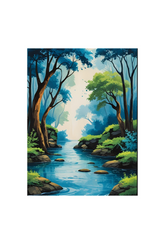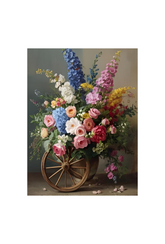Modernizing the Classic Checkerboard: A Fresh Take on Timeless Pattern Decor
When you hear "checkerboard," what comes to mind? The black-and-white squares of a childhood board game, or the retro patterns on your grandma’s old sofa? This classic motif, born thousands of years ago, is now sweeping the fashion and home decor world with a fresh new look. From minimalist living rooms to trendy outfits, the "modern transformation" of the checkerboard isn’t just an aesthetic revolution—it’s a perfect dialogue between the classic and the contemporary.

The Checkerboard’s Past and Present: Why It Transcends Time?
The checkerboard’s history is far older than we might think. As early as ancient Egyptian murals, there were decorative patterns divided into squares; medieval European church stained glass windows used geometric grids to tell religious stories; and the design of traditional Chinese Go and international chessboards even made it a symbol of "order and wisdom.
"What makes a classic a classic is its inclusivity. The strong visual impact of black-and-white contrast, the mathematical beauty of symmetrical balance, and the infinite possibilities of extension give the checkerboard an innate "versatile gene." But in the past, it was often labeled as "old-fashioned" or "stiff"—thick colors and cumbersome overcrowding made this classic pattern gradually disconnect from modern life.
That is, until designers started "subtracting": simplifying lines, softening boundaries, and injecting new colors. The checkerboard finally broke out of the "retro cage" to become a "traffic magnet" in modern design.
Modern Checkerboard Design: 3 Rules to "Break the Circle"
1. Color Revolution: Beyond Black and White, Infinite Possibilities
Who said checkerboards can only be black and white? Modern design has long broken this stereotype:
-
Low-saturation Morandi tones: Checkerboard rugs in dusty pink × off-white or light blue × oatmeal instantly soften the living room;
-
Vibrant color clashes: Checkerboard throw pillows in bright yellow × dark green or orange-red × navy inject vitality into minimalist spaces;
-
Same-color gradients: A natural transition from dark brown to light brown lets the checkerboard hide layers in understatement.
Color innovation turns the checkerboard from a "serious symbol" into an "emotion regulator," fitting styles like Nordic, Japanese, and light luxury.
2. Form Deconstruction: Breaking Squares, Letting Lines "Flow"
Modern design’s transformation of the checkerboard starts with "shape":
-
Irregular cuts: Blurred-edge checkerboard tiles add artistic texture to bathrooms;
-
Mixed sizes: Wall decorations with alternating large and small grids break the monotony of symmetry;
-
3D extension: Raised checkerboard accent walls made of wooden grilles give flat patterns a tactile feel.
These "unconventional" designs take the checkerboard from 2D to 3D, better satisfying modern people’s pursuit of "layers."

3. Scene Penetration: Beyond Home Decor, Checkerboarding Life and Outfits
The modern charm of the checkerboard lies in its ability to penetrate every corner of life:
-
Home highlights: A checkerboard tablecloth makes daily meals elegant, while a checkered lamp creates ambiance in the bedroom;
-
Fashion statements: An oversized checkerboard sweatshirt with jeans exudes laziness and casualness, while a checkered skirt with boots shows retro sweetness;
-
Minor details: Checkerboard elements on phone cases, coffee mugs, and even pet beds hide delicacy in the little things.
It’s no longer a large-scale "visual bombardment" but a well-placed "finishing touch," conveying a sense of sophistication through restrained design.
"Playing with Checkerboards" in Home Design: Pitfalls to Avoid + Inspiration
Want to try checkerboards but afraid of mistakes? Remember these two principles:
-
Small spaces need "light checkerboards": Avoid large areas of high-saturation checkerboards in small apartments; use small items like curtains or cushions to accent instead;
-
Large spaces focus on "layers": When laying checkerboard floor tiles in the living room, pair them with same-color furniture to reduce conflict and avoid visual clutter.
Inspiration case: In a minimalist apartment, designers used light gray × white checkerboards for the living room floor, paired with black single sofas and green plants. In the classic black-white-gray color scheme, the checkerboard becomes the "invisible skeleton" of the space, maintaining order while leaving room to breathe.
Classics Never Die, They Just Find New Ways to Shine
The checkerboard’s modern transformation tells us a truth: classic patterns never go out of style—what becomes outdated is rigid design thinking. When we reinterpret tradition with contemporary aesthetics and activate historical context with innovative techniques, old patterns can regain vitality.
Whether it’s the sharpness of black and white or the softness of intertwined colors, the checkerboard’s "age-defying growth" proves that good design transcends time. And those who understand "blending old and new" will always stay at the forefront of aesthetics.
Next time you see a checkerboard, take a moment to appreciate it—it’s not just a pattern, but a design dialogue spanning thousands of years. Are you ready to let the checkerboards in your home "grow younger"?












